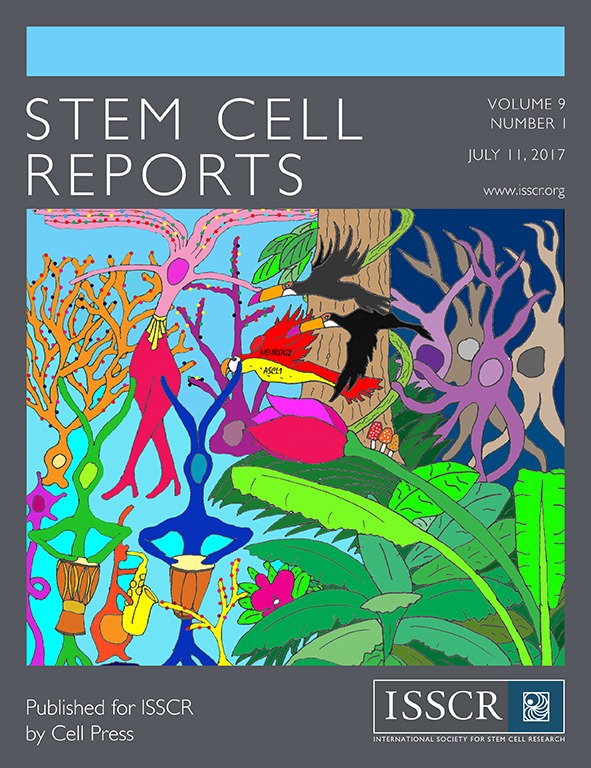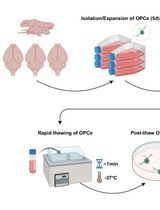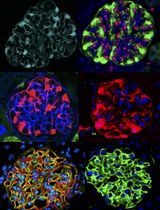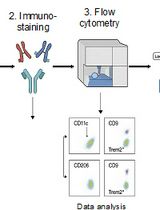- EN - English
- CN - 中文
Culture and Nucleofection of Postnatal Day 7 Cortical and Cerebellar Mouse Astroglial Cells
产后7天小鼠皮层和小脑星形胶质细胞的培养和核转染
发布: 2018年02月05日第8卷第3期 DOI: 10.21769/BioProtoc.2712 浏览次数: 8094
评审: Ehsan KheradpezhouhAnna La TorreAnonymous reviewer(s)
Abstract
Lineage reprogramming of astroglial cells isolated from different brain regions leads to the generation of different neuronal subtypes. This protocol describes the isolation and culture of neocortical and cerebellar astrocytes from postnatal mice. We also present a comprehensive description of the main steps towards successful gene delivery in these cells using nucleofection. Neocortex and cerebellum astrocyte cultures obtained with these methods are suitable for the study of molecular and cellular mechanisms involved in direct cell lineage reprogramming into induced neurons (iNs).
Keywords: Primary cell culture (原代细胞培养)Background
Astrocyte culture has been extensively described in the literature (Saura, 2007; Schildge et al., 2013). Several protocols, mostly differing in the number of steps for cell isolation, yield astrocyte cultures with sufficient purity (up to 98%). However, most protocols described to date focus on the isolation of astrocytes from the neocortex and use chemical dissociation (Schildge et al., 2013). Here, we provide an alternative method to generate highly enriched astrocyte monolayers without the necessity of chemical tissue dissociation, what makes the protocol rather faster as compared to previous methods. Additionally, we also describe the isolation and culture of neocortical and cerebellum astrocytes, highlighting some important differences between these two cell populations. Finally, we describe an alternative, cost-effective approach for gene delivery in astrocytes using nucleofection (Chouchane et al., 2017). This technique consists of the direct delivery of DNA molecules following electroporation of the cells using a specific voltage and reagent. Nucleofection of proneural genes into astrocytes is a cheap, fast and relatively efficient method that leads to similar results as compared to retroviral-mediated transfection (Heins et al., 2002; Berninger et al., 2007; Heinrich et al., 2012; Chouchane et al., 2017). It also presents a great advantage as quiescent astrocytes are easily targeted, hence bypassing the precondition of having dividing cells.
Materials and Reagents
- Pipette tips and micropipettes (Gilson, catalog numbers: K31-1001B , K31-201Y , K31-11 )
- Petri dish (Sigma-Aldrich, catalog number: P5731 )
Manufacturer: Excel Scientific, catalog number: D-910 . - Micro scalpel
- T75 culture flasks
- 15 ml tubes (Corning, catalog number: 430791 )
- 24-well tissue plates (Eppendorf, catalog number: 0030722019 )
- Mice
Note: Postnatal day 7 (P7) C57BL/6 mice were used from the animal facility of the Brain Institute (UFRN, Natal). All animal procedures were done in accordance with national and international laws and were approved by the local ethical committee (CEUA/UFRN, license # 008/2014). - Hank’s balanced salts solution (HBSS) (Thermo Fisher Scientific, GibcoTM, catalog number: 14025092 )
- Phosphate-buffered saline (PBS) (Thermo Fisher Scientific, InvitrogenTM, catalog number: AM9625 )
- Tryple dissociation reagent (Thermo Fisher Scientific, GibcoTM, catalog number: 12604013 )
- Poly-D-lysine (Sigma-Aldrich, catalog number: P0899 )
- Nucleofection device and kit
- 4D nucleofector (LONZA) X unit
- 16 wells Nucleocuvettes strips (20 µl)
- Solution for primary cells P3 (Lonza, catalog number: V4XP-3032 )
- 4D nucleofector (LONZA) X unit
- Astromedium (see Recipes)
DMEM-F12 (Thermo Fisher Scientific, GibcoTM, catalog number: 12634010 )
Fetal bovine serum (FBS) (Thermo Fisher Scientific, GibcoTM, catalog number: 10082147 )
Horse serum (HS) (Thermo Fisher Scientific, GibcoTM, catalog number: 16050122 )
Penicillin/streptomycin (Thermo Fisher Scientific, GibcoTM, catalog number: 15140122 )
Glucose (Thermo Fisher Scientific, GibcoTM, catalog number: A2494001 )
B27 (Thermo Fisher Scientific, GibcoTM, catalog number: 17504044 )
Epidermal growth factor (EGF) (Thermo Fisher Scientific, InvitrogenTM, catalog number: P35375 )
Fibroblast growth factor 2 (FGF2) (Thermo Fisher Scientific, InvitrogenTM, catalog number: 68-8785-82 ) - Differentiation medium (see Recipes)
DMEM/F12 (Thermo Fisher Scientific, GibcoTM, catalog number: 12634010 )
Glucose (Sigma-Alrich, catalog number: G8270 )
Penicillin/streptomycin (Thermo Fisher Scientific, GibcoTM, catalog number: 15070063 )
B27 (Thermo Fisher Scientific, GibcoTM, catalog number: 17504044 )
Brain-derived neurotrophic factor (BDNF) (Sigma-Aldrich, catalog number: B3795 )
Equipment
- Dissection microscope (ZEISS, model: Stemi DV4 )
- Incubator (Shell Lab CO2 Incubator)
- Refrigerated centrifuge (Hettich Lab Technology, model: Rotina 420 R )
- Nucleofection device (Lonza, 4D nucleofector controller and X unit) (Lonza, model: 4D-NucleofectorTM )
- 1,000 µl micropipette
Software
- GraphPad Prism version 5.00
Procedure
文章信息
版权信息
© 2018 The Authors; exclusive licensee Bio-protocol LLC.
如何引用
Chouchane, M. and Costa, M. R. (2018). Culture and Nucleofection of Postnatal Day 7 Cortical and Cerebellar Mouse Astroglial Cells. Bio-protocol 8(3): e2712. DOI: 10.21769/BioProtoc.2712.
分类
神经科学 > 细胞机理 > 细胞分离和培养
细胞生物学 > 细胞分离和培养 > 细胞分离
您对这篇实验方法有问题吗?
在此处发布您的问题,我们将邀请本文作者来回答。同时,我们会将您的问题发布到Bio-protocol Exchange,以便寻求社区成员的帮助。
提问指南
+ 问题描述
写下详细的问题描述,包括所有有助于他人回答您问题的信息(例如实验过程、条件和相关图像等)。
Share
Bluesky
X
Copy link












